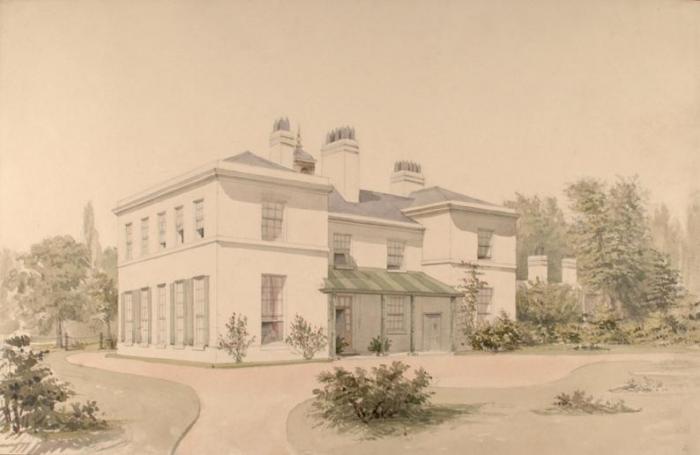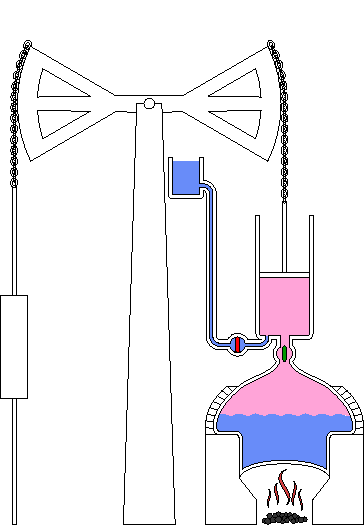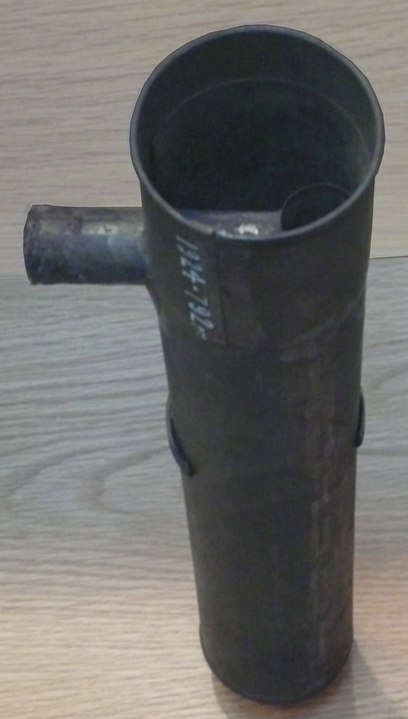Last updated on July 21st, 2023
James Watt is an 18th-century engineering genius. Although he did not invent the steam engine, his radically improved design was responsible for a massive leap in performance, efficiency, economy, and versatility. It powered the Industrial Revolution that ushered modern society, along with its triumphs and troubles. His legacy is celebrated across the world, and rightly so. However, only a few know the man behind the household name. Are you eager to learn more? Below are 50 facts about James Watt.
Early Life and Family
1. Birth
On January 19, 1736, James Watt was born in a small fishing village called Greenock in Scotland. His invention would help turn it into a prosperous town decades later.
2. Father
His father, James Watt Sr., was a respected carpenter who worked on buildings and ships. He also fixed their compass and other navigational devices. At times, he served Greenock as treasurer and chief magistrate.
3. Grandfather
Thomas Watt was the local schoolmaster known for his competence as a mathematician. It would soon be apparent that young James Watt has the same aptitude for the subject.
4. Illness
Ill health prevented James Watt from consistently attending school, but it did not stop him from learning. He devoured books and helped his father with carpentry projects. He also designed and created mechanical models.
5. Mother
James Watt was the eldest of five surviving children. His mother, Agnes Muirhead, came from a distinguished family. As a well-educated woman with a strong character, she guided young James in his studies.
6. Leaving the Home
In 1754, the family of James Watt suffered heavy losses. His mother died, and his father experienced business failures. James left home to earn money as an instrument maker and help the family.
7. First Marriage
In 1764, James Watt exchanged vows for the first time with his cousin Margaret Miller. The couple had five children, but only two survived to adulthood. Margaret died during childbirth in 1773.
8. Second Marriage
Watt married his second wife a few years later. Ann MacGregor was the daughter of a dye maker in Glasgow. They had two children: Janet, who died at 15, and Gregory, who lived to become a geologist.

9. Retirement
In 1790, James Watt built a mansion known as Heathfield Hall. The area is now part of Birmingham, England. He retired ten years later and lived a life of leisure. He often travelled to visit family and friends with his wife.
10. Death
James Watt lived to the ripe old age of 83. He died at his home on August 25, 1819. His remains are inside the expanded church of St. Mary’s in Handsworth.
James Watt at Work
11. Initial Struggles
Watt trained in London for a year as an instrument maker. However, he did not complete his apprenticeship. He wanted to set up a shop, but his youth and lack of connections made it difficult.
12. Lucky Break
The polymath Alexander MacFarlane donated astronomical instruments to the University of Glasgow. James Watt received substantial compensation for restoring them. He also received offers to set up a workshop at the university in 1757.
13. Illustrious Friends
Watt became close friends with several professors in Glasgow, including the economist Adam Smith who laid the foundation for capitalism. He also met the chemist Joseph Black who discovered magnesium and carbon dioxide.
14. Honing His Craft
Watt was in charge of the scientific instruments in the university, including telescopes, scales, barometers, and parallel rulers. He helped with demonstrations, production, maintenance, and repair.
15. Product Manufacturing
In 1759, Watts branched out. He teamed up with architect John Craig to make toys and musical instruments. Their factory employed 16 workers, one of whom took over the business when Craig died in 1765.

16. Spellbound with Steam
In 1712, Thomas Newcomen introduced the first piston steam engine. The design hardly changed in the decades that followed. In 1759, the physicist John Robison told Watt about it, planting the seed for his celebrated invention.
17. A Crucial Encounter
In 1763, a Newcomen engine in the university broke down. Watt came in to fix it, but performance remained poor. He figured out the cause: 75% inefficiency due to sub-optimal design.

18. Critical Insight
Watt thought of ways to improve the efficiency of the steam engine. In 1765, he was walking at a park when he got an idea: adding a separate condenser unit to minimize energy loss. He began creating a model to test his theories.
19. Capital Crunch
Full-scale engines require substantial sums of money. Watt turned to professor Joseph Black and the industrialist John Roebuck for financial support. Watt also used his salary as a surveyor and civil engineer.
20. A Successful Partnership
When Roebuck went bankrupt, the wealthy businessman Matthew Boulton came in with the necessary cash and technical expertise to help Watt. His Soho Manufactory made the precision cylinders and pistons that enabled excellent engine performance.
Inventions and Improvements
21. The First Engines
In 1776, Watt made engines that were only capable of up-and-down motion – good enough to pump water out of mines. They were popular in Cornwall, where customers loved the high efficiency due to the expensive coal.
22. Enormous Proportions
The machines were gigantic, with a height reaching 24 feet. Individual components were also huge, like cylinders with a diameter of 50 inches. Watt and his team had to erect a dedicated building to make and store them.
23. Cost of Acquisition
The business model proved to be popular. They installed the Watt engines and charged a modest annual fee. Buyers only had to pay a third of the value of fuel they saved compared to using the Newcomen engine.
24. Rotational Power
Boulton wanted the engine to produce rotational power – useful for milling, weaving and grinding. Watt made it happen using a crank, but patent problems forced him to find another solution. In 1781, he modified the design with sun-and-planetary gear.
25. Compound Engine
Not content with his invention, James Watt dreamed of making a compound engine that connects two or more steam engines for greater power. He also made double-acting engines in which steam moved at both sides of the piston.
26. Rising Efficiency
Watt kept enhancing his steam engine for higher efficiency. He introduced the parallel motion linkage, the throttle valve, the centrifugal governor, and the steam indicator. His enhancements made the Watt engine five times more fuel efficient than the Newcomen engine.
27. Safety First
James Watt considered pushing the pressure above the atmospheric level to generate more power. However, boilers back then were prone to explosion. He restricted his engines to atmospheric pressure for safety.
28. Copying Machine
It was hard to copy documents in the 1700s. James Watt made things better with a technique using ink and solvent, pressing the original to a second sheet to complete the transfer. He patented the invention in 1780, and people used the copying machine until the 1900s.
29. Attempts at Bleach
Watt was also a chemistry enthusiast. One of his experiments led him to create a cheap liquid textile bleach. He wanted to make it a commercial hit. However, other chemists developed better processes and products, such as Charles Tennant, who made a powdered form for ease of transport.
30. Gas Apparatus
The English physician Thomas Beddoes chose Watt to make suitable equipment for the new Pneumatic Institution in Bristol. He designed machines for producing, cleaning, and storing artificial gases.
Legacy and Honors
31. The Toast of Society
Elite groups welcomed James Watt with open arms during his time. The Royal Society of Edinburgh made him a fellow in 1784, and the Batavian Society for Experimental Philosophy of Rotterdam elected him as a member in 1787.
32. Unit of Power
James Watt was a sickly man, yet his name is now synonymous with power. For example, we express the power rating of bulbs, motors, household appliances, and industrial machines in the unit called watts.

33. Banknotes
In 2009, the Bank of England announced a £50 note featuring Watt and Matthew Boulton. It is the first dual-portrait note to come out of the bank. It also has images of the steam engine and the Soho Manufactory.
34. Hall of Fame
In 2011, James Watt became one of the first inductees into the Scottish Engineering Hall of Fame. The annual event also bears his name.
35. Hometown Hero
In Greenock, a statue stands near the birthplace of James Watt. The town also established the Watt Memorial Library, which houses the local history collection, including scientific books donated by Watt before his death.
36. A Degree of Respect
Watt served the University of Glasgow for a long time as an instrument technician. In 1806, the institution recognized his contributions to the school and the country by conferring an honorary Doctor of Laws degree.

37. The Watt Workshop
After the death of James Watt, the family sealed the workshop along with his tools and collections. They left it untouched as a shrine to his legacy. One of the rare visits was in 1853 by his biographer J. P. Muirhead.
38. Open for Inspiration
The house changed hands multiple times. In 1924, the new owner wanted to demolish and redevelop the site. The Science Museum in London obtained the contents and recreated the Watt Workshop for public display.
. . . continue reading on the next page
